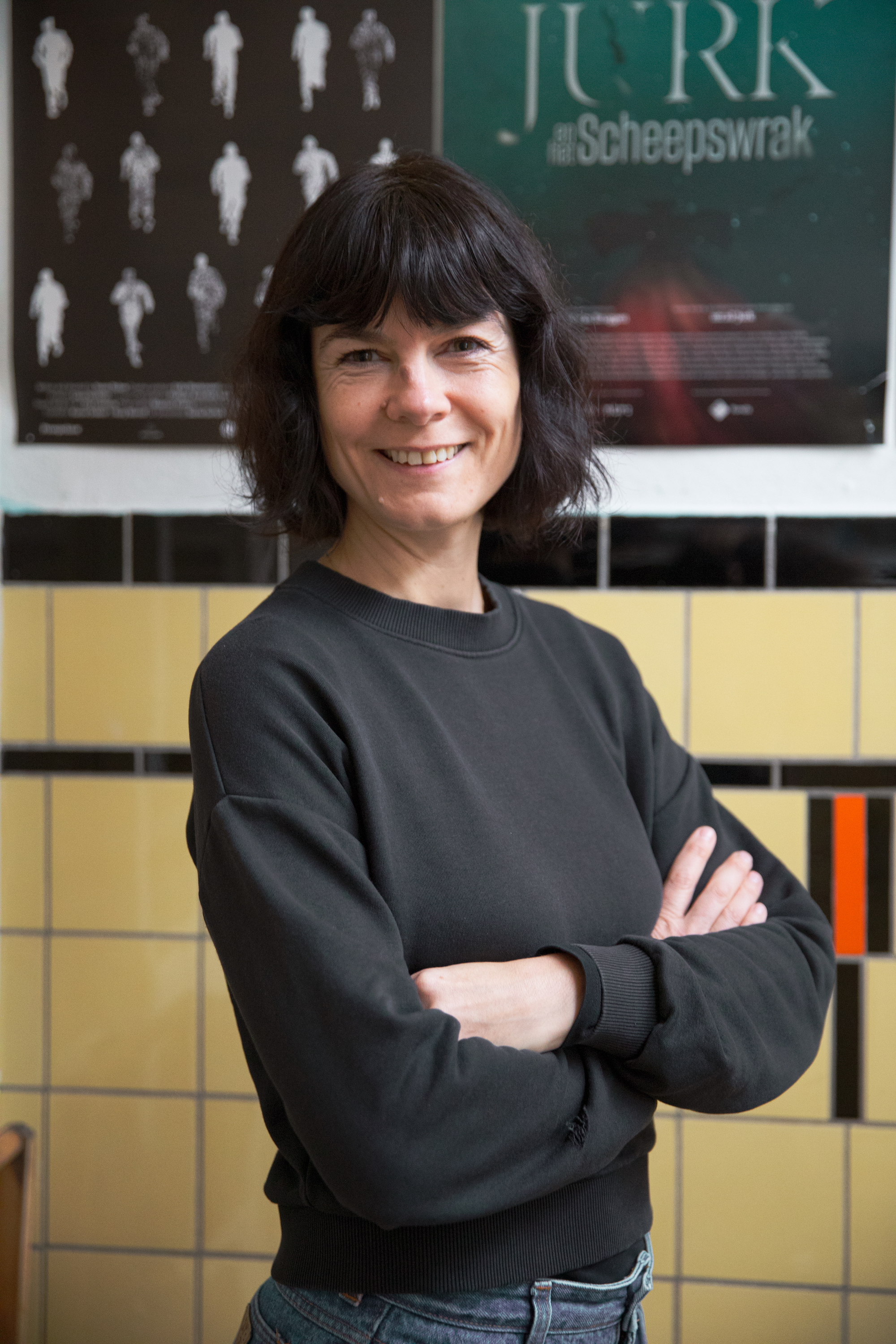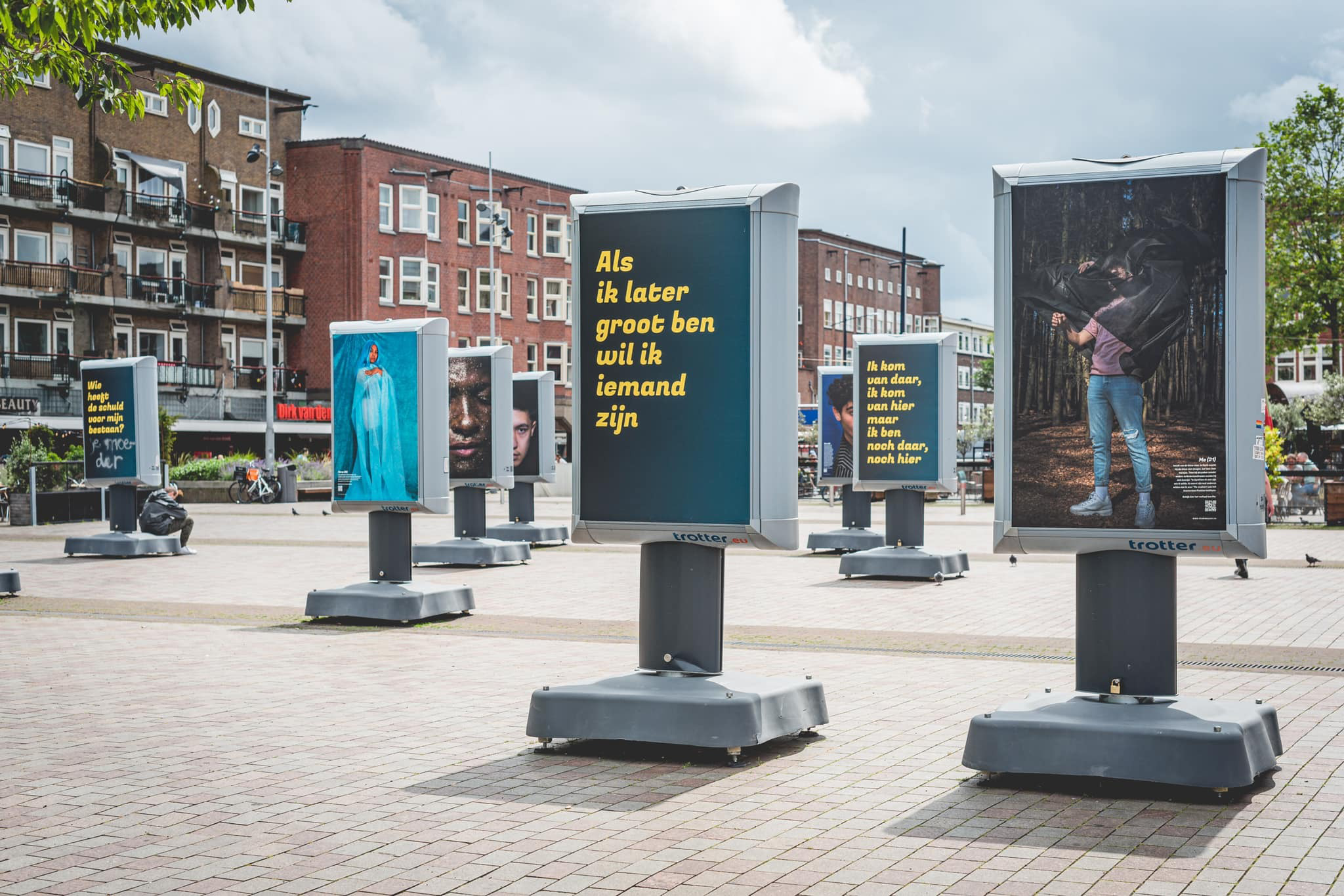January 11, 2024 Author: Iris van den Boezem Photography: Çiğdem Yüksel Translation to English: Joost Heinsius
The long documentary Shadow Game is about the journey, mostly on foot, of young fugitives through Europe. But it is not only a documentary, it is also an impact campaign, game, exhibition and follow-up documentaries: how do you raise the money for all that? Laura Verduijn, business manager of Prospektor (producer and initiator of the project), shares her most important lessons.
From activism, anger even. That's where the first plans for Shadow Game started. Journalists Eefje Blankevoort and Els van Driel found it unpalatable how refugees are treated in Europe. And in particular: minors on the run, even children, who have to endure rejection at every border. Or worse: serious abuse and terror. Laura: “They wanted to portray that. And not only that. They also wanted to spark a change in thinking and behavior. Plus make politicians understand the consequences of their policies. So the plan right away was to create a follow-up web series, exhibition and an educational impact campaign in addition to the documentary.”
Lesson 1: Lay a solid foundation
How do you start such a mega project? “Maybe an open door, but: make sure you first put your plans down on paper,” Laura begins. “That is important for yourself and the team: you force each other to formulate it clearly.” Take your time and be critical. Put the plan down and pick it up again later. Just until it is what it should be. “That will also help you later with financing applications. If you do it right, it will immediately become crystal clear why this project absolutely needs to happen. Also for someone from whom you request money.”
Funding for the documentary and Shadow Game's impact campaign comes primarily from funds. This helps to lay a solid foundation for the further project. “With funds, you know when you can apply and what benefit you get from them. Sure, you might get a rejection, but other than that it's pretty clear. So we started with that.”
 Portrait photo Laura Verduijn
Portrait photo Laura Verduijn
Ensuring that you are visible to funds can be beneficial. “If funds see what you do or have already done, it helps in weighing your application. They see: professional people are working on this, this inspires confidence. And it helps to make it easier to consult with them before you submit the application.” They also try to enter into discussions with funds about what the documentary sector needs. Sometimes it is frustrating to do this on top of that, she acknowledges, because writing all those applications takes enough time. “But in the end it always yields something. Although that sometimes requires a lot of patience.” Exhibition A New Beginning, Mercatorplein Amsterdam
Exhibition A New Beginning, Mercatorplein Amsterdam
Lesson 2: Provide multiple sources of financing and create support
Then choose a good mix of different financiers: this provides more support, a network and you are less dependent on one or two parties. It is important to keep a close eye on the conditions of the financiers involved. “The documentary was partly financed by the public broadcasting fund. A criterion is that you do not involve sponsors who derive commercial gain from their contribution. You need to make this clear in advance. That is also a reason to start with the most important financiers – in our case the funds – and only then complete the budget with other sources of money.”
What other sources of money can you think of? Look for parties that are close to your work and be creative. See Shadow Game, which is about a sensitive social theme. Something that other parties, NGOs, are also working hard for. It makes sense to throw a ball in there for financing. “In our case, that only worked to a limited extent. NGOs rely on donations, and for that reason they often have their campaigns planned for the entire year. So both a monetary contribution and help with our campaign were difficult,” Laura reflects. “That doesn't mean it was in vain. This left us with a nice network, and some parties arranged screenings for us, allowing us to show the documentary to target groups who, in our opinion, definitely needed to see the film. And an organization such as UNHCR (UN refugee organization, ed.), for example, provided a nice financial contribution to the film. Investing in relationships pays off, even if it does not immediately result in money on the balance sheet.”
Lesson 3: Involve others
“From the beginning we worked with another producer: Witfilm. They produced the documentary, Prospektor did that for all other components of the project and the campaign. This way we shared the fundraising, the workload and the risks. Witfilm is experienced in producing major films, we are good at working transmedia and in campaigning. We strengthened each other with our own expertise.”
Of course, she admits, working together is sometimes a bit scary at first. Won't you give away your plan? “It is all the more important to think about each part of your plan: who do I need for this? And to look very carefully at shared values. As long as you have enough to offer each other and are open about it, things usually go well.” Moreover, Laura notices, collaboration only makes plans more solid. It not only provides extra hands or money, but also brainpower, knowledge and a larger support base that can ultimately help find financing. “It's really cool to see how someone else looks at your plans. And that together you take it to a higher level. In my experience, working together in this way always yields something. Also in the longer term.”
Lesson 4: Use warm contacts
The production of the documentary ran parallel to the setting up of the impact campaign, the production of the web series and the photo exhibition and the development of the video game. The financing for the smaller parts did not have to be 100% completed immediately, because not everything was launched at the same time. “We therefore built a network while production was running. That helped enormously, also financially. At a certain point, Shadow Game was something you wanted to be involved with. We noticed this, for example, when we started a crowdfunding campaign to raise money for the boys in the film: it took little effort.”
One of the parties Prospektor worked with was ice cream producer Ben & Jerry's. “They have a team that deals with awareness. And we had a warm contact there. That's how we started talking.” Visibility was very important to Shadow Game, and Ben & Jerry's has enough reach to contribute to that. “Instead of a bag of money, this party mainly helped us through joint campaigns. Because of the financing from the public broadcasting fund, they were not allowed to encourage people to purchase tickets for screenings. But they could say, for example: 'Watch this trailer, we think this documentary is valuable.' That certainly helped us.” Ben & Jerry's also arranged to take a cameraman to screenings. The content that the team behind Shadow Game obtained provided great exposure. “Finishing your financing mix is primarily about money. But once the foundation is in place, you can look more flexibly at what you can do for each other. If it's not a monetary contribution, what else can it be? Don't forget to contact your own warm contacts. There are often more possibilities than you think.”
Cover photo: Team Shadow Game in front of the European Parliament
Find the original article here
--
This article was previously developed and published by Cultuur+Ondernemen, a knowledge platform for entrepreneurship in the cultural and creative sector and a financier for cultural entrepreneurs in the Netherlands.










